Tiger Woods made a record 24th straight Masters cut Friday and believes he has a chance this weekend.
A 6-handicap tested Cobra’s new Aerojet and King clubs. Here’s what he learned
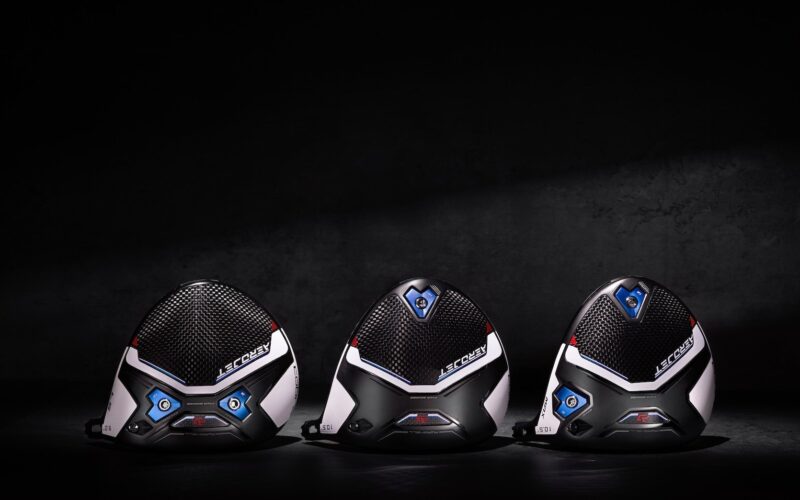
What makes Cobra’s 2023 club lineup so special? One of our writers — a 6-handicap — took them for a spin to find out.
The post A 6-handicap tested Cobra’s new Aerojet and King clubs. Here’s what he learned appeared first on Golf.
What makes Cobra’s 2023 club lineup so special? One of our writers — a 6-handicap — took them for a spin to find out.
The post A 6-handicap tested Cobra’s new Aerojet and King clubs. Here’s what he learned appeared first on Golf.
Welcome to GOLF.com’s ClubTest Proving Ground, where Managing Equipment Editor Jonathan Wall and Senior Equipment Editor Ryan Barath — along with a cast of GOLF writers and editors — put the latest designs and groundbreaking technology in the equipment space to the test on the range and the course.
For 2023 ClubTest, we paired members of our staff with the latest gear from manufacturers in order to give you, the potential club buyer, “a real feel.”
TESTER: Ryan Noll (Equipment Writer) | 6.5 HCP
GOAL: Find a set of irons and wedges that produces some semblance of consistency.
THE LOWDOWN: Tiger and I are roughly the same age, so as his game evolved, so did mine to a much lesser extent. Okay, to a much much lesser extent. I played some competitive golf in school, but it wasn’t until college that my game blossomed and my handicap shrunk to my career-best: a 0.8 index. Fast-forward a decade or two, add two kids (hence way fewer rounds per year) and a long career in and out of golf, and my handicap is now closer to a 6 or 7, depending on how often I play. A typical round usually comes with occasional flashes of brilliance marred by frequent bouts of inconsistency.
I’m 6’3” and more than 200 pounds, so distance is still my strong suit. I’ve made some significant swing changes lately and I’m much more consistent off the tee, but my irons aren’t as sharp as they used to be. If I have an issue, it’s with mishitting my irons — especially the short ones. I’m prone to pull hooks and when I miss it’s usually on the thin side. I’m downright inconsistent with wedges, too. Where many of my playmates are able to stick their wedges at least some of the time, rarely do I nail a close wedge shot from 75 to 125 yards. (I really need a wedge game lesson. Like now.)
I’m probably the least discerning member of the gear team when it comes to what I use. I’ve been writing about golf equipment for 20-plus years and have tested dozens and dozens of sets. I’d say I probably prefer the look and feel of a forged cavity-back, but I’m open to whatever helps me go low. I have no equipment ego. I’ll play anything, from any manufacturer.
FITTING PROCESS: I wasn’t fit for these specific clubs, but I’ve been fit countless times (including this year) so I know what I need and the characteristics my 6-sometimes-7 handicap demands. I have a fast swing speed, but because I’m tall and have a slower tempo, I can get away with S-flex in almost everything. Admittedly, that’s not smart because even I know that no two S-flex shafts are exactly the same. But generally, I stick to “boardy” feeling shafts with mid-high kick points that feel firm to lessen my hooks and pulls and to keep the ball from ballooning in the air. I play S-flex in my driver and woods, too — with my driver tip-trimmed for a lower trajectory and a slightly firmer feel. I’m an easy fit, too; I play everything in standard lies and lengths. The only area where I get a little finicky is with grips. I put midsized grips on everything, sometimes with 2-3 layers of tape underneath. I can’t stand skinny handles.
Armed with that knowledge, Cobra sent me a pile of new clubs to try. This included drivers (all three models), irons and a hybrid. And as a bonus, they sent me some additional irons to compare and contrast with as well. More on those below.
Lastly — and even though I didn’t — you most certainly can and should get fit at one of many Cobra fitting centers around the country, or by the experts at GOLF’s sister company, True Spec Golf.
My gear
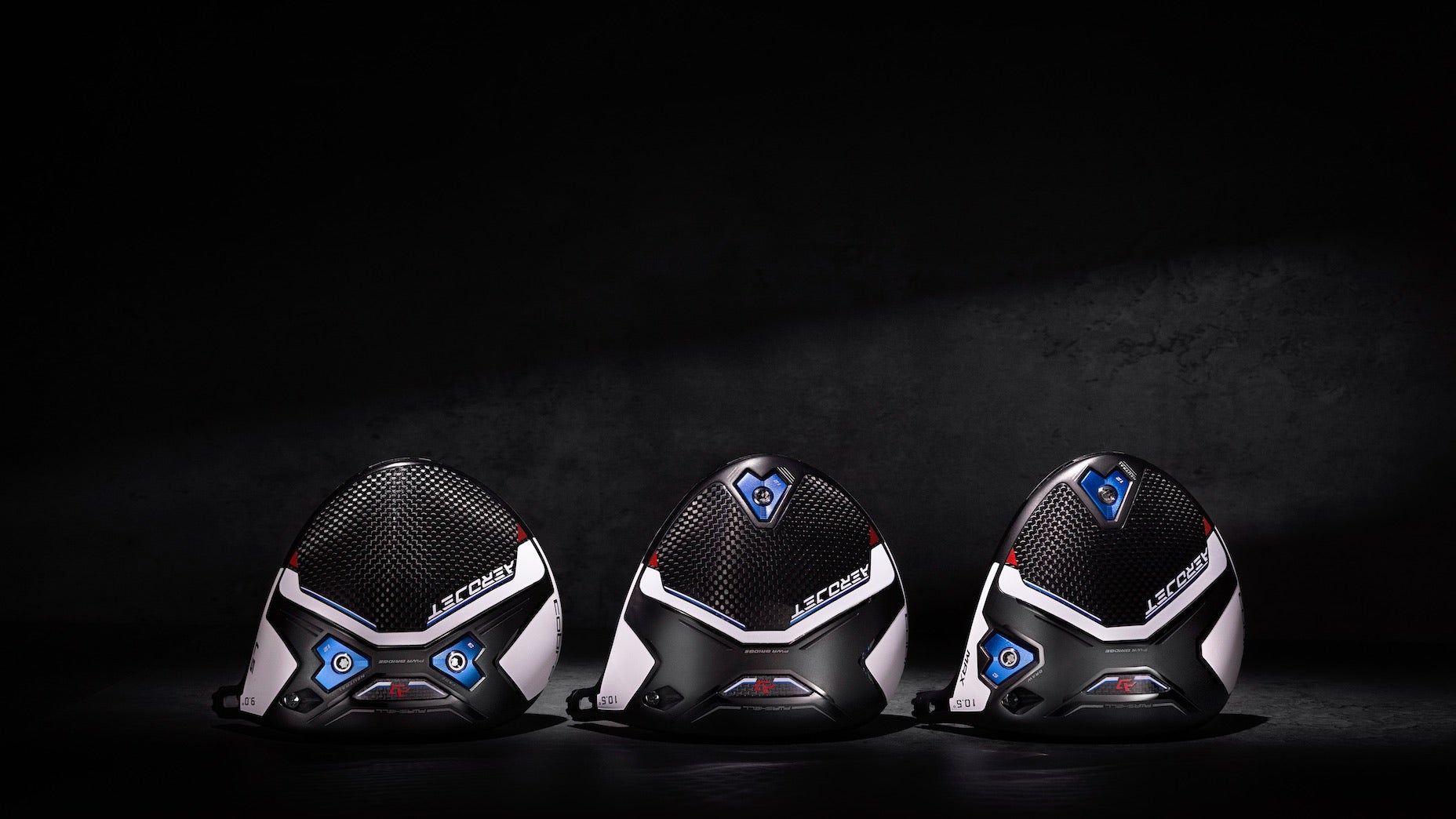
Driver: Before we dive in, let me just say that I pulled the exact card I was hoping for in being chosen to review what’s new from Cobra. I happen to think Cobra is one of golf’s most interesting companies. The folks on the inside of the Carlsbad-based equipment manufacturer make gear that caters to major champions and chronic slicers alike. They aren’t afraid to take risks, but at the same time they also cater to fans of classic club designs. Cobra’s not a one-trick pony — if anything, the company is a stable of multi-trick ponies aimed to please the new golfer as much as they are someone like me who’s been playing a while.
Cobra sent me three new Aerojet drivers to try in three different flavors: LS (low spin), Max (slight draw bias) and the straight-up Aerojet that sits like Goldilocks between its other two driver bears. All three models carry much of the same tech, including the suspended PWR-BRIDGE weighting, new aerodynamic shaping and plenty of carbon composite material on the crown and underside of the clubhead to optimize weight placement for maximum power. All three drivers have unique head shapes: the LS is the most pear-shaped, the Max is triangular and the standard model is somewhere in between the two. All three drivers come with a MyFly adjustable hosel for differing lie/loft configurations.
The LS (designed with input from Bryson DeChambeau and long driver Kyle Berkshire) is made to make an already long hitter even longer. I probably shouldn’t have, but this is the driver I tested first. And in the beginning, I struggled with the need to swing this club the way it was designed — hard and fast. It wasn’t as though I was missing, but because this is a stout driver, I had to trust that swinging harder would produce better results.
And it did.
Head-to-head with my current gamer, the LS was easily 15-20 yards longer. But it took me effort to do so and my misses were more frequent — and in some cases more severe. I’d assume my spin was at least 2,000 RPMs less than what I’m used to. I could see it in how the ball flew.
Enter the Aerojet Max. Not only is the head much more triangular than the pear-shaped LS model, one swing and I blasted the ball off the tee with a high, slight pull-hook to the left. To call it different is an understatement. This driver was super-easy to hit — even when I took swings at around 80 percent speed. The ball flew much higher than it did with the LS — with plenty of pop and distance. I noticed zero forward roll on the eight or nine shots I hit on the 9th hole at my local club — hey, it was a slow Tuesday afternoon and nobody saw me do it — but the carry was legit. I also did not slice this club. Not on the course, not on the range. Not once.
I half-expected the standard Aerojet to be my favorite and — it was. This Aerojet driver yielded big results for me. My gamer is an inch shorter than this driver, so I added about 10 yards of distance right off the bat. If you’re asking, 10 extra yards is huge for me. I average approximately 280 off the tee — with the Aerojet I can smash it 290, no problem. Sometimes much more if I get a hold of it. My misses felt different than my misses feel with my gamer — that took some getting used to for sure. If anything, I’d leak the occasional drive to the right or sometimes I’d pull it. Nary did I hook it though, which I think that extra inch had everything to do with.
In summary, all three drivers were a blast to hit and are Cobra’s best yet. But beware — though they all share much of the same technologies, they’re three completely different drivers when it comes to how they perform.
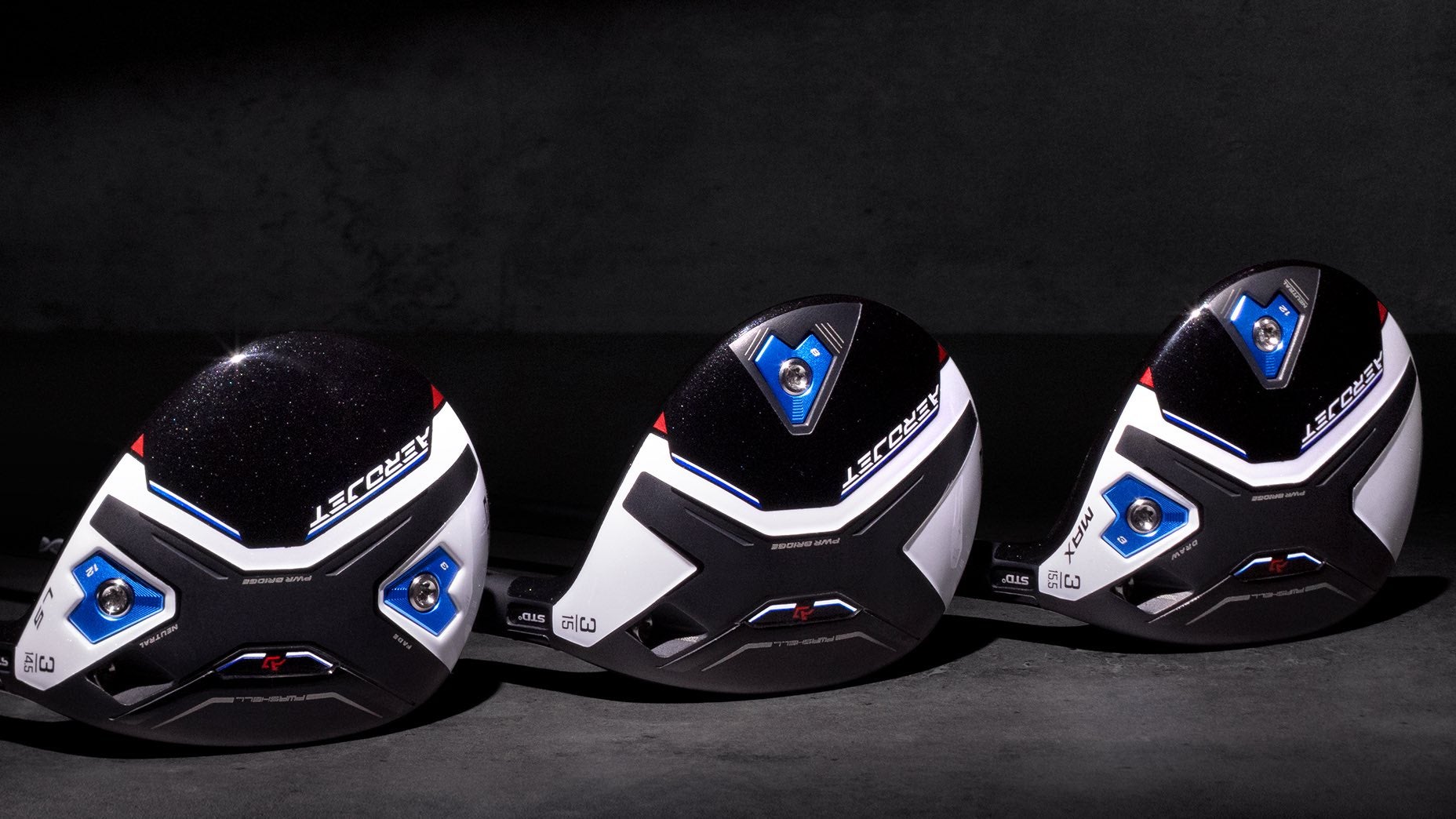
Fairway woods: Cobra sent me a standard, LS and Max model to try that, like the drivers bearing the same name, came with different performance profiles for different types of players. All three have PWR-BRIDGE and PWRSHELL tech as well as carbon crowns, but in different configurations that yield very different results. The LS is the low spin/driver alternative option, the Max (the higher-hitting draw-biased model) and the standard that’s designed for middle-of-the-roaders like me. Now, here’s where things got interesting. I hit all three woods great. Like really great. The LS was a powerhouse and I crushed it off the tee and fairway. Albeit, my shots flew lower than I’m used to and they most certainly did not land soft. Even though I struggled to shape my shots, I hit stinger after stinger, and it was downright awesome.
The standard Aerojet flew, felt and delivered as expected for me, with comparable distance to my gamer 3-wood. The only difference is the Mitsubishi Kai’li Blue 60 shaft seemed to help the ball launch a little higher and my toe misses were hardly an issue. It’s my favorite-looking Aerojet wood in the bunch from an aesthetics standpoint but wasn’t my favorite to hit.
Here’s where things got weird. But before I go further, it’s important to recognize that no clubs fit two golfers exactly the same. I happen to NOT be a distance-seeker with my woods and I prefer to hit them higher with some added backspin. I want the ball to land softly (ideally on fairway or green), and I’m looking for consistency in my woods. And that’s precisely what the Aerojet Max delivered.
I hit high draw after high draw — almost ridiculously on repeat. I didn’t compare distances with the others, but I sensed even with a slightly shorter overall distance, this is the wood I’d put in the bag. If by chance I hit it too high, one click of the torque wrench and I can adjust the hosel to flight things down a bit.
All three Aerojet woods did what they’re supposed to. If I had a gripe it’d be that I struggled to shape shots with any of them — most noticeably I couldn’t curve it with the LS at all. It’s a small gripe and likely a me-thing and not a club-thing. Still, all three are venerable upgrades, with the Max being the unlikely hero of the bunch.
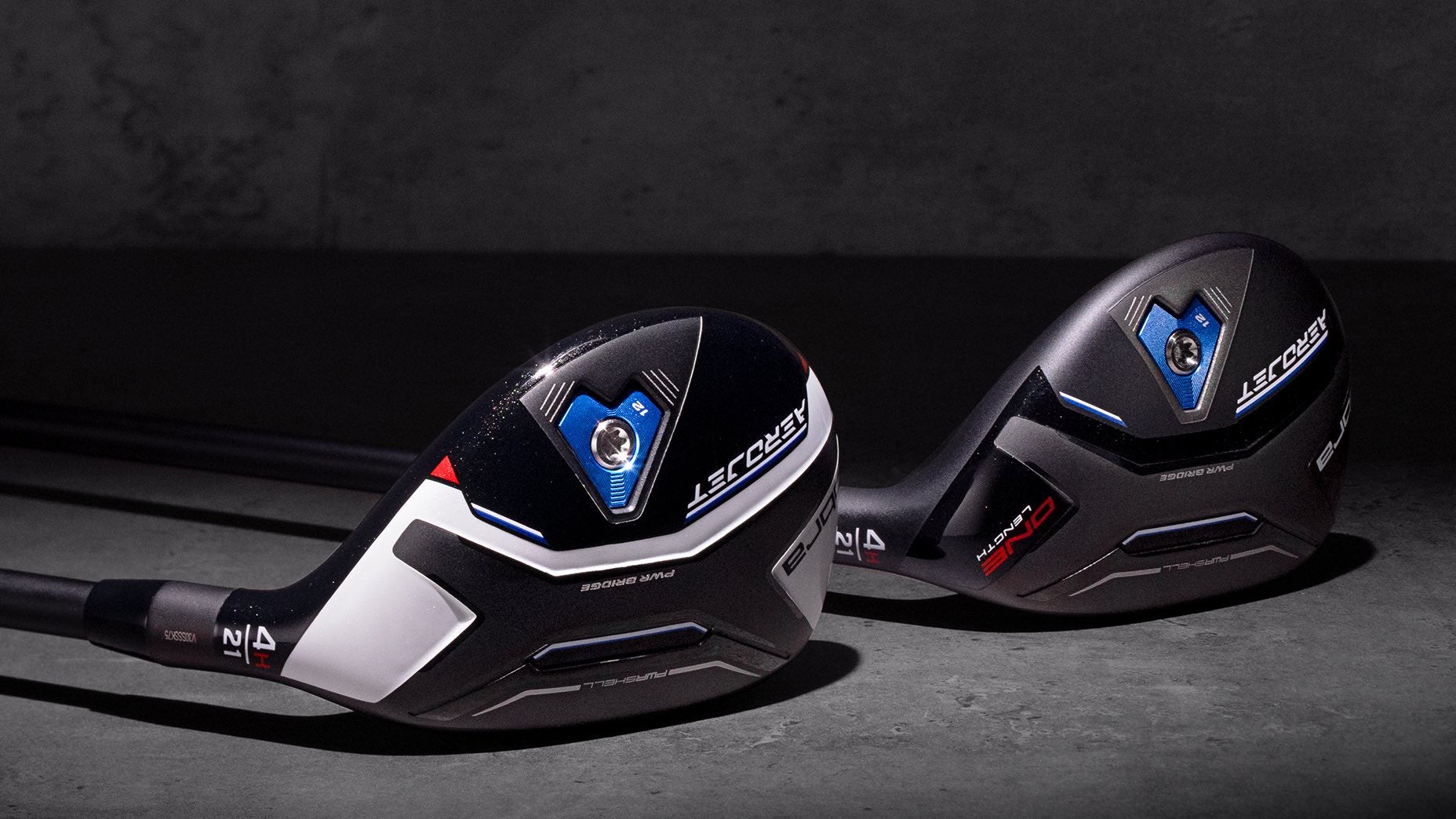
Hybrids: There’s a new Aerojet hybrid that I was able to try, too. And in this case, Cobra sent me two — one that was standard length, another that was One-Length, which meant it measured about as long as my 6-iron does.
I liked the Aerojet hybrid just as well. It was easy to hit and the ball got airborne quickly with loads of forgiveness. But to my surprise again, I fell head over heels in love with the Aerojet One-Length hybrid model. I felt as though the shorter length meant I could swing more aggressively (which I did) and the ball flew higher than it did in the standard length model. And get this — I hit the One-Length model just as far. There’s not a lot of science I can use to back this up other than chalking it up to the added confidence I felt with it in my hands.
The Aerojet woods and hybrids are strong options for all player types, and because all three seem fairly easy to hit in my hands, it’s up to you to decide what you want out of a wood and choose the right one that matches your needs. For me, I don’t need a long-hitting fairway wood or even a long-hitting hybrid. I prefer higher trajectories that land soft.

Irons: The Aerojet irons have a look and feel that I’m not used to. Some of the new features include what Cobra calls its PWR-BRIDGE weighting design that uses a 70-gram steel weight separated via polymer from the rest of the club. This lowers the center of gravity (CG) for a faster/higher launch and also because the weight is displaced, it yields more flex in the face for greater distance.
I tested the variable length version, but they’re also available in One-Length configuration as well. Aesthetically, these iron look great on the eyes, and the decals, polymers and weighting tech practically fills the entire cavity. And, the brushed finish is something we wish every iron had. Depending on my head position, I could actually see the PWR-BRIDGE tech from above, which was a nice reminder that these irons are decked out for more distance.
Here’s the thing, though. Because of the low profile of this iron (shorter height from sole to topline) they seemed to sit flatter than I’m used to at address. At first, this was a bit jarring, but I quickly realized they weren’t flat at all and it was my eyes playing tricks on me due to their low-profile design.
As for distance, these irons played about 5-10 yards longer than my gamer set, which for reference is a mixed set of forged muscle-backs and cavity-backs that are already fairly long-hitting to begin with. I didn’t see monstrous gains in power, but what I did appreciate was the higher ball flights and softer descent angles — especially with the middle irons (the longest iron I tested was a 5-iron). They weren’t as long as some of the hollow-body irons I’ve tried lately, but where they differed was in how they felt. They were buttery smooth on solid shots and when I missed, they still felt pretty darn great.
Further, on forgiveness, this is where the Aerojet irons exceeded expectations. I hit a number of shots both on the range and on the course dangerously close to the heel and saw very little shot deviation from my intended target line and very little distance loss. Shots hit off the toe faired a little worse and distance suffered — but only by a little. I tested a set with steel shafts, but I can imagine these irons being even more impressed if played with graphite shafts instead. Making that switch would likely bring more distance gains for me, which hey, an extra 5-10 yards is already a big deal. I’d suspect I could eke out a few more yards with a more resilient graphite shaft in each club.
Because the Aerojet irons are distance and forgiveness oriented, I fully expected these irons to have little to no workability. But as I often have been with the whole Aerojet line, I was pleasantly surprised to see the ball curve on command. Granted, not as much as it would with a forged muscle-back or cavity-back, but more than I’ve experienced with other multi-material, game-improvement, distance-oriented iron sets.
To summarize, the Aerojet performed exactly as they’re billed. They’re long, easy to hit and produce a mid-to-high (for me at least) trajectory that I loved. They’re the kind of irons for players who want added power without having to opt for a hollow body iron which frankly, doesn’t feel as good as an iron like this with polymer sandwiched between the face and a floating weight system. Again, if you asked me I’d probably give the graphite shaft set a try before you do a steel-shafted iron set. It’s likely they’ll perform even better.
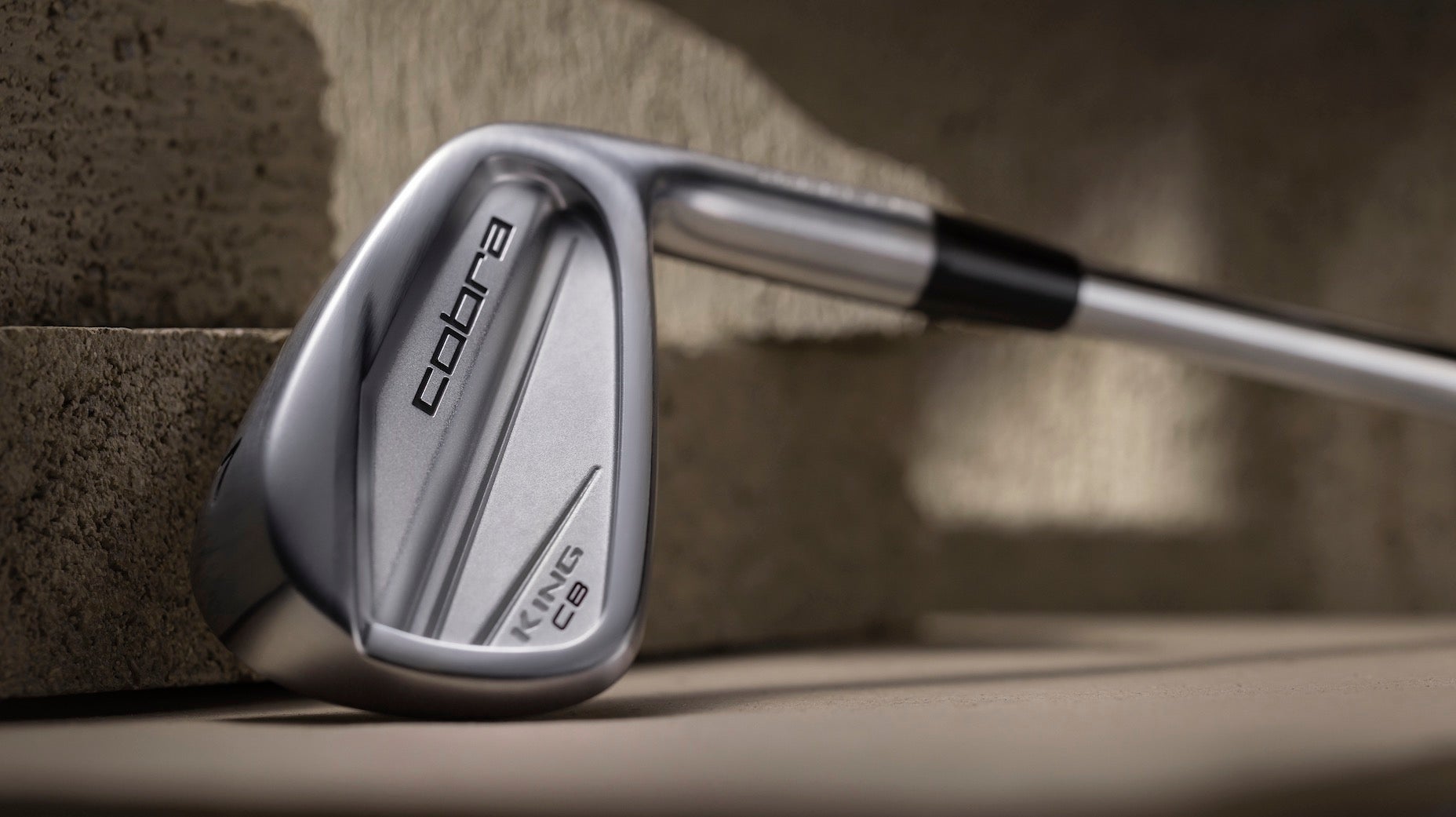
Aside from the impressive Aerojet family, Cobra Puma sent me its latest forged iron trio to test as well: the King Tour, King MB and CB iron sets.
All three irons are made via Cobra’s 5-step forging process which essentially means each iron is forged five ways to ensure absolute precision and consistency across the entire billet of 1025 carbon steel. They’re rough forged three times, then forged again under intense heat and pressure (700 degrees and 1200 tons of force), then forged a fifth time under even hotter temps (800 degrees) and even more pressure (2000 tons of pressure). The result of the 5x forging is a better grain structure for a buttery soft feel and consistency from clubhead to clubhead.
The Tour irons come with a TPU insert behind the face and an aluminum medallion so in essence it’s a forged club with a couple of extra benefits for improved feel and forgiveness. In my hands, these irons again felt flat — which again is the result of Cobra’s penchant for lower-profile iron heads. In play, these irons were spot on, dead on and any mistake was purely my fault and not the club’s. Shots fired a little lower and more boring than they do with my gamer set (which isn’t all that different than these) and I had zero trouble shaping shots. The highlight was how well the middle irons performed — I don’t think ever I’ve hit a 6-iron as pure as I did with these irons, and the short irons looked impeccable at address. Let’s just say the King Tour has all the good things a player’s iron ought to have, with a couple extra bonuses for the times you need a little boost.
I hit the Tour MB and CB irons too and they’re definitely geared for the player who wants maximum shotmaking capabilities and a pure forged feel. I was sent a mixed set, that had CBs (cavity-backs) in the 4-6 iron and MBs (muscle-backs) in the 7-iron through to the PW. Both had a more boxy shape and a much thinner sole and topline than the King Tour, and both are the kind of irons that advanced players will want to try because of the smooth feel and the penetrating trajectory found in every model.
To wrap these up, here’s what to know: The King Tour is a player’s club with a bit of give thanks to the TPU insert and to a slightly bigger profile, more rounded and thicker sole, and also a bit more offset. Even still, it had much the same feel that the MB/CB irons had, but with a slightly less penetrating trajectory and a bit less workability. All three delivered on their promises, but make no bones about it. They’re all three for better players and not the average golfer who wants distance and forgiveness first.
The results
Cobra has long hovered in the upper pantheon of high-end equipment while still retaining a down-to-earth sensibility and attitude when it comes to its product builds. The Aerojet line is a worthy upgrade over last year’s LTDx models, sure to please golfers who want added distance with every club.
For me, I didn’t see the huge gains I expected (I’m already longer than most), but I was happy to see that the drivers and woods and even the hybrid was fun to hit and extremely forgiving. The Aerojet irons were mighty as well, but if I had to choose, the King Tour delivered the feel and performance that I’m most used to.
As I said in the beginning though, I’m less picky about what I play than I am about how I play, so I plan to keep testing these irons to see which ones help me post the lowest scores in 2023. Stay tuned to find out.
The post A 6-handicap tested Cobra’s new Aerojet and King clubs. Here’s what he learned appeared first on Golf.

